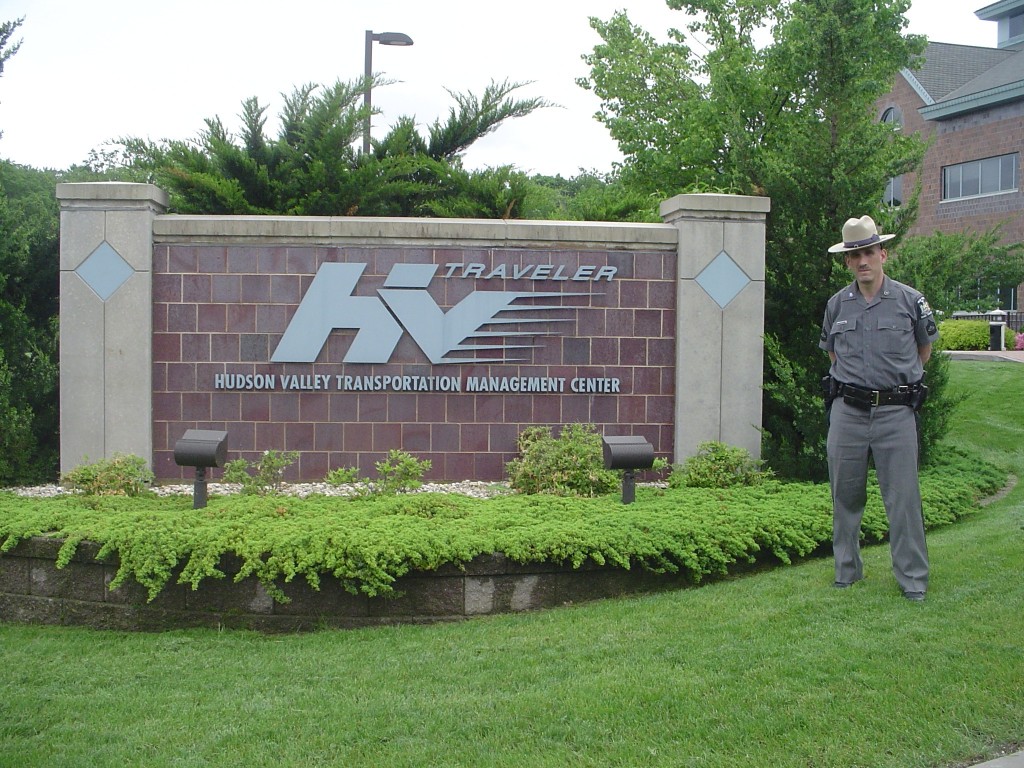Headlights On . . . Ira S. Promisel
 Current Company: New York State Police
Current Company: New York State Police
Department: Hudson Valley Transportation Management Center
Position/Title: Chief Technical Sergeant
Please describe your early aspirations/career goals that led to your current role as Chief Technical Sergeant for the New York State Police and as Station Commander of the Hudson Valley Transportation Management Center (TMC)?
I always wanted to be involved in law enforcement and government. Once I began looking at career choices, I was instantly attracted to the NYSP for their professionalism and reputation. As my career developed, I saw opportunities in Traffic Incident Management (TIM) that led me to the HVTMC. In particular, I was drawn to the combination of operations, emergency management, and technology.
You have several advanced degrees, what drives your passion for continued education and how has it affected your position within the NYSP?
Although there is no substitute for experience, education gives the foundation needed to improve. Without it, you are playing a game without fully understanding strategy or the rules. Education provides an extra edge and puts operations in context through the study of theory and sharing ideas. It has significantly assisted me in my position within the NYSP by grounding my decisions as well as establishing relationships with academia.
You also serve as Vice Chair of the National Traffic Incident Management Coalition. What projects/ topics related to Safety Service Patrols (SSP’s) is NTIMC working on?
The NTIMC and the I95 Corridor Coalition have both provided numerous benefits to SSP’s . Currently, I95 (in conjunction with FHWA) is developing a tool that will allow SSP’s to quickly figure out their benefit-cost ratios in a rigorous manner. NTIMC is working on a number of projects, but the key effort is institutionalizing the principles of the NUG (National Unified Goal) for Traffic Incident Management.
Describe the advantages of including State Police in management of the NYSDOT HELP patrol, and how other SSP’s might benefit from coordination with State Police?
Each SSP program is different and each operates within different parameters. In the case of the HVTMC program, the NYSP is able to quickly coordinate assets between SSP and NYSP (or local patrols in some cases). In addition, the NYSP provides a field perspective in deployment, training, and operations. Both (in the Hudson Valley) operate on the same technology platform. This allows for easier analysis of call data, performance measures, etc.
How would you describe the NYSDOT HELP patrol’s business model? The patrol is available in six regions of the state, but has multiple private contracted operators. How do you work with these operators to ensure consistency in services and management practices across the regions?
I can only speak for the Region I am involved in. We have 6 “beats” that each go out to bid. Currently we have two contractors that provide service for the 6 beats. They each have field supervisors that we interface with. Each area is dispatched through the same communication point that police are dispatched from. Two troopers and I then manage issues that cross jurisdictions, complaints, training etc. This builds a model focused on trust, consistency, managing expectations, and open communication.
Along with Chihsheng Chou and Elise Miller-Hooks from the University of Maryland you co-authored a study titled “Benefit-Cost Analysis of Freeway Service Patrol Programs: Methodology and Case Study.” What are the key findings of this study and in your opinion what is the single greatest cost benefit of Safety Service Patrols?
This study found through very conservative assumptions, that there were significant benefits versus the cost for a service patrol. The follow up study (mentioned above) will allow others to use the same methodology in much faster and easier way. Key findings include improvements in reduction of secondary incidents, lessened congestion, quicker clearance, and reduced emissions. The greatest benefit is the quick clearance (and subsequent reduction of secondary incidents). The less time the incident is on the road, the less likely it is that a responder or member of the public would be struck.
In your role at the TMC and its coordination with the NYSDOT HELP patrol, what are some of the initiatives you’ve taken to improve roadway safety?
We’ve made improvements in operations, communications, technology, and performance measurement. Each of these has a direct role in roadway safety. We’ve deployed multi-discipline training and coordination efforts with our partners, deployed technology such as mobile real-time video from the HELP fleet, and set up protocols to ensure safe, quick clearance.
Is there a “best practice” of the Hudson Valley TMC/NYSDOT HELP Patrol that you might recommend for consideration by other SSPs?
Sometimes the most effective tools are also the simplest and often are already being deployed. SSPs should look at the existing business practices in their area and see how they can leverage them. Two examples in the Hudson Valley can help illustrate this.
1) The use of police dispatch for HELP. This simplifies a number of processes and allows for coordination and buy-in by the police. In the case of the Hudson Valley, five dispatch points (3 different agencies) are used.
2) Combining reporting requirements among agencies. This is mainly seen in snow storms where HELP, police, and the Thruway are using the same reporting standards for road conditions.
Given your experience in TIM, how do you think Safety Service Patrols compare with other incident management programs?
They are absolutely a critical component and fill a gap in service between the police, DOT and the towing industry. I would consider them a part of any effective incident management program as opposed to a program separate and apart.
In what ways is the NYSDOT HELP Program different from other SSP programs elsewhere across the country?
The key reasons for the success of the HELP programs are:
- The connection with the police
- The use of a common technology platform (CAD system and others)
- The flexibility to tailor the program to the needs of the facility (Thruway, County Parkways, etc.)
- The responsiveness of the program (weather events, terrorism (9/11), planned events)
- The outstanding attitude and professionalism of the drivers
What changes in incident management do you envision over the next decade and how will it impact SSPs?
There a number of challenges and opportunities. Challenges will include the cost of transportation and many incident management treatments, the increase in congestion, and the push for more efficient government. Opportunities include more regional (even multistate) responses and coordination, technology improvements to include more connection to the public with social media, and more sustained training and outreach. SSPs are positioned to provide solutions for these challenges. They are proven entities that can act like a Swiss army knife on wheels. They are probes for identifying an incident quickly, they are responders that can manage incidents, they can clear incidents, and they can report information to the public and other emergency responders. This will allow them to exploit new communication technologies and procedures even more effectively.
In your position you speak with many DOT’s. What have you found to be the best vehicle for communication among states’ Safety Service Patrols (presentations, conferences, conference calls, newsletters, websites, etc.)?
Nothing can replace face to face communication. Often the best ideas come after the formal meeting. An example of this is the 1 hour TIM familiarization course that has been deployed in the Hudson Valley. Given the financial condition of many areas and the need to wisely spend limited funds, this often cannot take place. The next best vehicle is a fusion of a few types to include: a few conferences (possibly even combining several together), periodic webinars, newsletters, and the use of websites to get more detailed information. An example of a successful model of this is the NTIMC (National Traffic Incident Management Coalition) and the TIM Network.
What is the one theme you would want to reinforce in Safe Highway Matters’ forum?
Safety is the concern of all responders. Let other responders know if they are doing something unsafe. If they choose not to listen, find a way to make them safer. For example, if they park in an unsafe spot and won’t move, make sure there that warning devices are put out to warn on-coming traffic.
